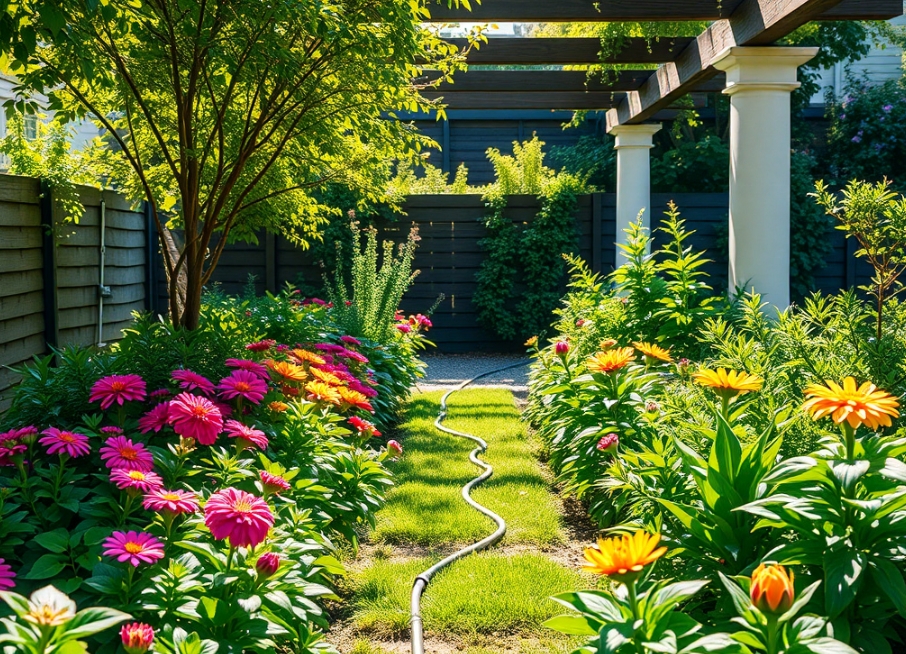Understanding how sunlight and shade influence the moisture requirements of your plants can make a significant difference to their long-term health. Whether your garden is a patchwork of bright borders and leafy canopies or a sun-drenched open space, managing water effectively starts with understanding the light conditions. Well-designed garden watering systems can play a crucial role in delivering the right amount of hydration in the right places, but it all begins with knowing your garden’s light profile.
Light Levels and Moisture Retention
One of the most overlooked aspects of garden care is how dramatically sunlight affects soil moisture levels. Areas exposed to full sun tend to dry out more quickly, especially during the warmer months. This means plants in these zones often need more frequent watering to stay healthy and prevent wilting.
Conversely, shaded areas often retain moisture for longer periods. That might sound ideal, but too much shade combined with heavy watering can cause problems such as root rot or mildew. Understanding how quickly the soil dries in different parts of your garden allows for more precise watering practices, reducing waste while supporting plant health.
Plant Placement and Microclimates
The positioning of your plants creates what’s known as microclimates—pockets within your garden where conditions vary from the surrounding area. A tall shrub casting afternoon shade over a flowerbed, for example, may reduce that bed’s water requirements, even if it’s in an otherwise sunny spot.
This is where the benefit of planning becomes obvious. Grouping plants with similar light and water needs allows you to water efficiently without overcompensating in one direction or the other. It’s not just about saving water—it’s about giving each plant the conditions it needs to thrive without struggling against its environment.
Adjusting Watering Practices for Light Conditions
Tailoring your watering habits to your garden’s lighting conditions can drastically improve results. In sunny spots, watering deeply but less frequently encourages plants to develop robust root systems that search for moisture deeper in the soil. This not only supports healthier plants but helps them become more drought-tolerant over time.
In shaded areas, a lighter, less frequent approach tends to work better. The goal is to avoid water stagnation, which is more likely when sunlight isn’t there to aid evaporation. It’s also wise to pay attention to the specific plants in each area—some shade-loving varieties are particularly sensitive to overwatering.
Making Practical Use of Your Garden’s Light Map
Creating a simple sketch or mental map of your garden’s light exposure throughout the day can make a big difference. Observe how sunlight moves across your outdoor space and take note of how plants respond. Morning sun, for instance, tends to be gentler than afternoon sun and may require slightly different watering strategies, even for the same type of plant.
Once you have a clearer picture of how light interacts with your space, you can use that knowledge to guide watering decisions, install drip lines more accurately, or set up timers that align with your garden’s rhythm. The more aligned your system is with natural conditions, the more effective and sustainable your watering strategy will be.





























